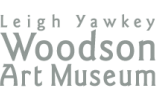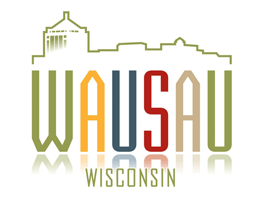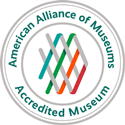WAUSAU, WISCONSIN: Elegant origami artworks and intricately cut paper sculptures are featured in two exhibitions on view January 26 through April 7 at the Woodson Art Museum.
“Folding Paper: The Infinite Possibilities of Origami” comprises more than 100 works by forty artists from thirteen countries and celebrates the art form’s history, modern influence on math and science, and power to cross cultural and socio-economic boundaries.
In “Calvin Nicholls: Paper Sculpture by Design,” a Canadian artist’s eye-popping three-dimensional cut-paper sculptures demonstrate a mastery of technique that uses little more than paper to yield stunningly imaginative results.
For both Nicholls and origami artists, paper is a medium for infinite creativity, and Museum visitors have an array of opportunities to participate. On opening day, a Wisconsin origami artist leads visitors in creating paper cranes for a community artwork project during Origami Fold Out, Saturday, January 26, Noon-5 pm. This year’s snow sculpture carved by Team USA Snow Sculptors, February 1-2, is inspired by Nicholls’ paper sculpture of a tree frog. Nicholls leads student groups and public programs during his Woodson Art Museum residency, March 5-9. Visit www.lywam.org for a complete listing of events and programs.
“Folding Paper” traces origami’s history, rooted in a rich Japanese and European tradition of paper folding, through its mid-twentieth-century rise from classroom craft to a sophisticated art form, and explores its modern-day influence on technology, design, and the global peace movement.
Origami artwork on view includes breathtaking, abstract depictions of fantastical creatures made possible through wet-folding, crumpled, and pleated paper techniques as well as complex geometric, modular pieces created by artists who also are mathematicians pioneering a range of technological discoveries and applications.
“Folding Paper” reveals vast possibilities inherent in origami and how it inspires aesthetically pleasing and cutting-edge advances in engineering, architecture, and fashion as well as innovations in space and medical technology. Origami-inspired practical applications include collapsible, space-saving inventions for aeronautic, package, and building design. Origami, mathematics, science, and design have become increasingly interconnected. Teachers use origami to explain arithmetic and geometry, and computational origami employs algorithms and theory to solve complex problems. Airbag logistics, space telescope lenses, heart stents, and cell phone and architectural design are based on origami principles. “Folding Paper” artist Dr. Robert Lang, for example, is a scientist and mathematician who used computational origami to determine how to fold an enormous telescope lens like a furled umbrella so it could be launched compactly and then re-opened in space.
The most famous of traditional origami forms – the crane – has become associated with long life and peace. Today, origami spans cultures thanks to internationally recognized paper-folding notations of numbers and arrows that enable people worldwide to follow directions to create forms and contribute to collaborative public projects. All ages are invited to fold origami cranes to add to a community art project, Flock to Fold, which remains on view through April 7. The folded animal shapes that introduce many children to origami will be featured in Art Park, the Museum’s interactive family gallery, where all ages can explore the art of origami.
Nicholls’ three-dimensional cut-paper sculptures that seem to burst from the confines of framed mats begin with careful study of an animal’s musculoskeletal features. After determining the animal’s body shape and underlying structure, Nicholls uses scalpels and leather-working tools to slice heavy paper into pieces that he shapes and glues together. “Creating an illusion of depth in a paper sculpture that becomes a conversation piece is my reward,” said Nicholls, whose career spans more two decades. During his five-day residency, “Paper Cuts,” Nicholls leads programs for school children during Museum visits, a workshop for all ages, a program for individuals with blindness or low vision, and a gallery walk.
“Paper Cuts” funding comes from a Community Arts Grant from the Community Foundation of North Central Wisconsin, with funds from the Wisconsin Arts Board, Community Foundation, and the B.A. & Esther Greenheck Foundation. This project also is supported in part by a Challenge America Grant from the National Endowment of the Arts and a grant from Target.
“Paper Sculpture by Design” is drawn from the collection of Follett Library Resources, McHenry, Illinois. Follett Library Resources is a part of the Follett Corporation a provider of products, services, and solutions to the educational marketplace.
“Folding Paper” was curated by Meher McArthur, and the tour organized by the Japanese American National Museum, Los Angeles, and International Arts & Artists, Washington, D.C. The exhibition was generously supported by the E. Rhodes & Leona B. Carpenter Foundation.
Woodson Art Museum
Hours: Tuesday – Friday 9:00 am – 4:00 pm
First Thursday of each month 9:00 am – 7:30 pm
Saturday – Sunday Noon – 5:00 pm
Closed Monday and holidays, including Easter
Admission: Always Free Admission
Phone: 715.845.7010
Fax: 715.845.7103
Email: museum@lywam.org
Location: Franklin and 12th Streets, Wausau, Wisconsin 54403-5007
(700 N. 12th Street)
Online: www.lywam.org




